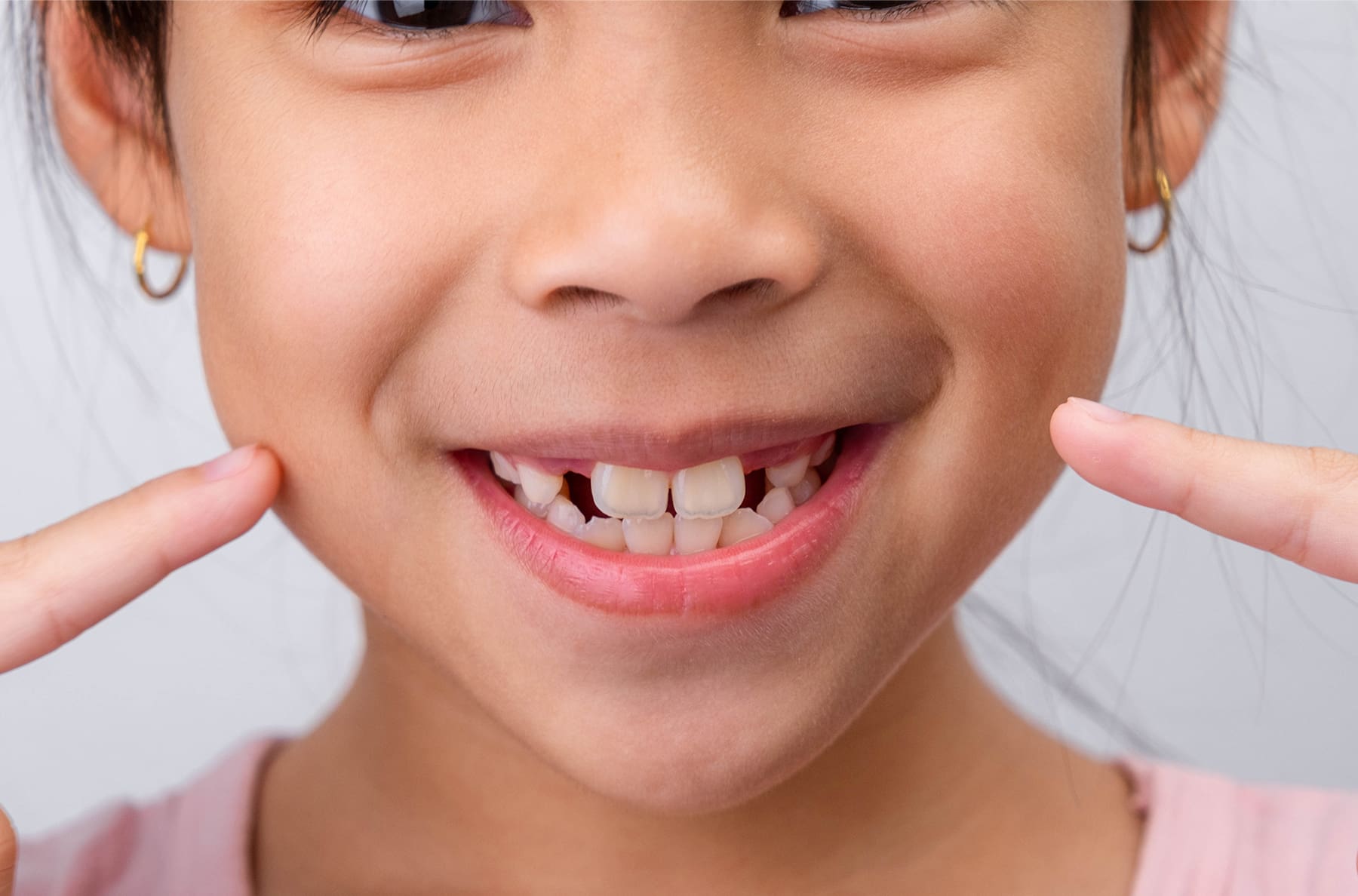Reviewed By Dr. Jodi Kuhn
Reading time: 3 minutes
You might assume crooked teeth are inherited, but many cases are linked to behaviors and growth patterns. Habits like thumb sucking, mouth breathing, and even the way a child swallows can influence how their teeth come in.
In this post, we will break down the most common causes of crooked teeth, explain when orthodontic care might be needed, and share what you can do early on to support your child’s developing smile.
We offer orthodontic treatment for kids and adults at our offices in Denver, Aurora, Thornton and Hampden.
Table of Contents
Key Takeaway
Crooked teeth in kids are often caused by a mix of genetics, habits, and growth patterns. Early dental checkups and orthodontic evaluations can help catch issues early and set your child up for a healthier, more confident smile.
Why Kids Have Crooked Teeth
There is no single cause for crooked teeth. In most cases, it is a combination of habits, growth patterns, and genetics. Here are some of the most common reasons:
- Inherited traits: Crooked teeth can run in the family. Children may inherit the shape and size of their teeth or jaws from their parents, which can affect how well the teeth fit together. For example, a child might inherit larger teeth from one parent and a smaller jaw from the other, leading to crowding as permanent teeth come in.
- Early tooth loss: If your child loses baby teeth too soon, the nearby teeth can shift into that space. When permanent teeth erupt, they may have less space and come in crooked.
- Prolonged thumb sucking or pacifier use: If your child continues thumb sucking or using a pacifier beyond age 3 or 4, it can affect how the teeth and jaw develop.
- Tongue thrusting: Some children press their tongue against their front teeth when swallowing or speaking. Over time, this pressure can cause the teeth to shift forward or become crooked.
- Mouth breathing: Chronic mouth breathing due to allergies, enlarged tonsils, or nasal issues can affect facial and jaw development. Kids who mouth breathe may have a narrow upper jaw or misaligned teeth.
- Permanent teeth coming in behind baby teeth: Sometimes, permanent teeth begin to erupt before baby teeth fall out. This can lead to crowding and misalignment. Dentists call this “shark teeth.”
Do Crooked Teeth Cause Dental Problems?
Crooked teeth can interfere with how a child eats, speaks, and cares for their teeth. While not every case leads to complications, misalignment often contributes to a variety of issues, including:
- Chewing or biting difficulties: When teeth do not line up properly, it can make chewing less efficient and put uneven pressure on certain teeth, which may cause wear over time.
- Speech challenges: Tooth position can affect how sounds are formed. Misaligned front teeth or bite problems sometimes contribute to lisps or unclear speech.
- Higher risk of cavities and gum disease: Crowded teeth are harder to clean, especially in tight spaces where plaque can build up. This makes brushing and flossing less effective, increasing the risk of decay and gum inflammation.
- Jaw discomfort: An uneven bite can place extra stress on the jaw muscles and joints. Over time, this may lead to soreness, fatigue, or even headaches.
- Self-esteem concerns: Children may feel self-conscious about how their teeth look, especially during social situations or as they get older.
To help prevent these issues, regular dental checkups are important. A dentist can monitor your child’s development and recommend orthodontic treatment if needed.
| 🦷 Did You Know? Children can develop gum disease, too, even if they still have baby teeth. Early signs like red, swollen gums or bleeding during brushing are often easy to miss. Regular dental cleanings and good brushing habits are key to keeping gum tissue healthy as your child grows. |
At What Age Should Kids Get Braces?
There is no one-size-fits-all age for braces. The right timing depends on how your child’s teeth and jaw are developing. Here is a general breakdown of what to expect:
- Ages 6 to 8: Early orthodontic evaluations begin around this time. Your child’s dentist will monitor how the permanent teeth are coming in and how the jaw is growing. Treatment is not always needed at this stage.
- Ages 9 to 11: Some children begin phase one treatment to guide jaw development or create space for incoming teeth.
- Ages 11 to 14: This is the most common age range for braces. By this point, most or all permanent teeth have erupted, making it an ideal time to correct alignment.
The best age for braces depends on your child’s unique needs, not just their birthday. Learn more about when kids should get braces.
Schedule a Dental Checkup At Youth Dentistry & Orthodontics
From routine checkups to early orthodontic evaluations, our team is here to support your child’s healthy smile every step of the way. We provide expert dental care and braces for kids and adults. Our team will help you understand the best timing and treatment options for your child.
Book an appointment at one of our four locations:
📍Denver Youth Dentistry and Orthodontics: 1400 Grove Street, Denver, CO 80204 | (303) 825-2295
📍Aurora Youth Dentistry and Orthodontics: 14251 E. 6th Avenue, Aurora, CO 80011 | (303) 343-3133
📍Thornton Youth Dentistry and Orthodontics: 550 E. Thornton Parkway, Suite 240A, Thornton, CO 80229 | (303) 280-8878📍Hampden Youth Dentistry and Orthodontics: 7400 East Hampden Ave. Unit C1, Denver, CO 80231 | (720) 826-3694


